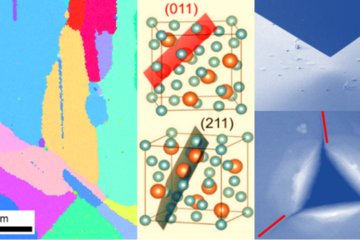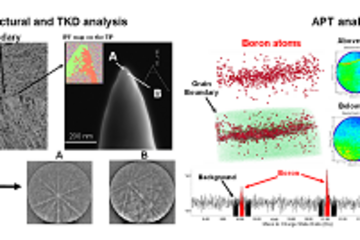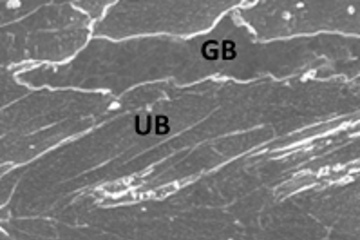All genres
21.
Journal Article
Structure of rapidly quenched (Cu0.5Zr0.5)100-xAgx alloys (x=0-40 at.%). Journal of Alloys and Compounds 607, pp. 285 - 290 (2014)
22.
Journal Article
A novel approach to measure grain boundary segregation in bulk polycrystalline materials in dependence of the boundaries’ five rotational degrees of freedom. Scripta Materialia 81, pp. 16 - 19 (2014)
23.
Journal Article
Atom probe tomography study of ultrahigh nanocrystallization rates in FeSiNbBCu soft magnetic amorphous alloys on rapid annealing. Acta Materialia 68, pp. 295 - 309 (2014)
24.
Journal Article
A novel, single phase, non-equiatomic FeMnNiCoCr high-entropy alloy with exceptional phase stability and tensile ductility. Scripta Materialia 72–73, pp. 5 - 8 (2014)
25.
Journal Article
Enhanced superplasticity in an Al-alloyed multicomponent Mn–Si–Cr–C steel. Acta Materialia 63, pp. 232 - 244 (2014)
26.
Talk
Atomic structure of a novel hard coating – transmission electron microscopy study of Mo2BC. Microscopy Conference 2017, Lausanne, Switzerland (2017)
27.
Talk
Metastable High-Entropy Dual-Phase Alloys with Joint Increase in Strength and Ductility. 2016 MRS Fall Meeting, Boston, MA, USA (2016)
28.
Talk
Linking crystallography with property: towards comprehensive characterization of grain boundaries. ICOTOM 17, Dresden, Germany (2015)
29.
Talk
Accelerated nucleation in nanocrystalline Fe–Si–Nb–B soft-magnetic alloy. ISMANAM 2013, 20th International Symposium on Metastable, Amorphous and Nanostructured Materials, Turin, Italy (2014)
30.
Talk
Microstructure, phase stability and mechanical behavior of non-equiatomic FeMnNiCoCr high entropy alloys. TMS 2014, San Diego, TX, USA (2014)
31.
Talk
Composition dependence of phase stability, deformation mechanisms & mechanical properties of CoCrFeMnNi HEA’s. Compositionally Complex Alloys 2014, München, Germany (2014)
32.
Talk
Gum metal plasticity. The International Symposium on Plasticity 2014, Freeport, Bahamas, USA (2014)
33.
Poster
Towards Comprehensive Crystalographic and Property Characterization of Grain Boundaries. Fachbeiratsitzung 2013, MPIE, Düsseldorf, Germany (2013)
34.
Poster
Effect of rapid annealing on the microstructure of FeSiNbBCu alloy. MRS Fall Meeting 2011, Boston, MA, USA (2011)
35.
Thesis - PhD
Atomic scale investigation of clustering and nanocrystallization in FeSiNbB(Cu) soft magnetic amorphous alloys. Dissertation, RWTH-Aachen, Aachen, Germany (2014)











